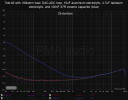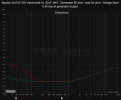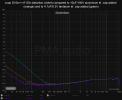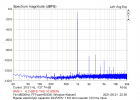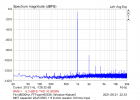He measured frequency response, so those follow. In this forum we obey the laws of physics!Had you measured impulse response and phase response with all 3 capacitors?
-
WANTED: Happy members who like to discuss audio and other topics related to our interest. Desire to learn and share knowledge of science required. There are many reviews of audio hardware and expert members to help answer your questions. Click here to have your audio equipment measured for free!
You are using an out of date browser. It may not display this or other websites correctly.
You should upgrade or use an alternative browser.
You should upgrade or use an alternative browser.
Audible difference in high-end capacitors? - ABX samples
- Thread starter ctrl
- Start date
I think that's a real concern. When forced to use a capacitor I use industrial polypropylene from Panasonic, machine wrapped and coated with epoxy.Some time ago I have watched and listened to a quite interesting demonstration.
Several crossover capacitors have been used by this demo.
For each test one of them has been connected to the outputs of a power amp in series with a proper protecting resistor (low resistance, high load. Just to avoid a short circuit).
The amp has been fed by a CP player.
And surprisingly different capacitors have started to play music acting like a little speaker driver.
The loudness was of course different. Some capacitors could be heard directly, some required a stethoscope.
The conclusion: depending the tightness of the mechanical structure the capacitors behaved like motors. A very interesting experiment.
Now motors can also behave as generators.
And so I wonder if a capacitor can produce distortions (like another example: knock on a cable connected to an oscilloscope).
So mechanical vibrations (crossover capacitor placed in a speaker) may thus influence the sound.
The aging of a capacitor may also change the mechanical behaviour.
Possibly it would make sense to select this way a best (silent) and a worst (loud) capacitor and then to investigate if they give different results with measurements described in the first post of this thread.
First of all, many thanks to @ctrl for the excellent post 
So you could hook up the cap to a microphone amp and see what you'll get if you plat sound sound through a closeby speaker, and then quantify the amount of microphonics. Now do the same with an 8-ohm resistor in parallel and see how much of it is left... I'd be surprised if you'd be able to pick it up.
Why is that surprising? Many microphones are built on the same principles.And surprisingly different capacitors have started to play music acting like a little speaker driver.
So you could hook up the cap to a microphone amp and see what you'll get if you plat sound sound through a closeby speaker, and then quantify the amount of microphonics. Now do the same with an 8-ohm resistor in parallel and see how much of it is left... I'd be surprised if you'd be able to pick it up.
There is some anecdotal evidence that the resonance affects the signal. Well...maybe.First of all, many thanks to @ctrl for the excellent post
Why is that surprising? Many microphones are built on the same principles.
So you could hook up the cap to a microphone amp and see what you'll get if you plat sound sound through a closeby speaker, and then quantify the amount of microphonics. Now do the same with an 8-ohm resistor in parallel and see how much of it is left... I'd be surprised if you'd be able to pick it up.
misureaudio
Member
An investigation about this could be done even just on the worst exemplars, with and without an air spring isolator with very low resonance (about 1-2 Hz) and high Q, when it goes to incident delayed acoustic field, radiated from actual loudspeakers and reaching, e.g., a preamplifier stage with series condensers on the signal path. This aspect of microphonicity could be present too.Some time ago I have watched and listened to a quite interesting demonstration.
Several crossover capacitors have been used by this demo.
For each test one of them has been connected to the outputs of a power amp in series with a proper protecting resistor (low resistance, high load. Just to avoid a short circuit).
The amp has been fed by a CP player.
And surprisingly different capacitors have started to play music acting like a little speaker driver.
The loudness was of course different. Some capacitors could be heard directly, some required a stethoscope.
The conclusion: depending the tightness of the mechanical structure the capacitors behaved like motors. A very interesting experiment.
Now motors can also behave as generators.
And so I wonder if a capacitor can produce distortions (like another example: knock on a cable connected to an oscilloscope).
So mechanical vibrations (crossover capacitor placed in a speaker) may thus influence the sound.
The aging of a capacitor may also change the mechanical behaviour.
Possibly it would make sense to select this way a best (silent) and a worst (loud) capacitor and then to investigate if they give different results with measurements described in the first post of this thread.
Jantzen does at least offer a datasheet. My b*tt hurts when I see super expensive electronic parts with no datasheet. Can't the manufacturer be bothered?Jantzen is not really 'high-end' . . . don't plotz when you see the price:
Jupiter Condenser, Copper foil, paper and wax.
Audio Note, Copper foil and Silver foil, Mylar and oil.
There are others with prices that are even more ridiculous . . .
- Joined
- Jul 10, 2019
- Messages
- 124
- Likes
- 338
Why is that surprising? Many microphones are built on the same principles.
I simply did not expect how loud some capacitors played the music.
That microphonics can be destructive over time, if the cap is conducting serious ripple current for example, which is why industrial capacitors are designed to suppress it.I simply did not expect how loud some capacitors played the music.
OP
- Thread Starter
- #29
Yes, but you will not find a difference there either.Had you measured impulse response and phase response with all 3 capacitors?
Here is the comparison of the Alumen-Z-Cap impulse response (orange) compared to the Standard-Cap (green). I had to use the maximal possible scaling in Arta to make a minimal difference visible:
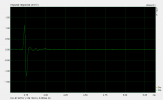
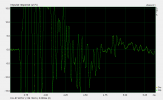
Last edited:
True, though that does not seem to be of the same nature that the OP is investigating, studying or experimenting. In the case of the Denon, All we knew from Amir at the time was "Denon Engineering traced this to a faulty capacitor( or capacitors) used in the initial run of this AVR." So, that was a "faulty" case, not a case of poorer quality in terms of specs of the capacitor or capacitors. There was no further details released that I am aware of.One thing we do know is that a capacitor issue led to the Denon issue at the beginning of COVID.
This can be done by someone who is familiar with DeltaWave (the recordings are now online in post#2), because the frequency range below about 800-1000Hz must not be evaluated in the recordings, because the ambient noise disturbs there - for more details see post#1 under section "3) Measurement consistency"
DeltaWave analysis, high-pass filtered at 1000Hz:
Standard vs Alumen-Z:

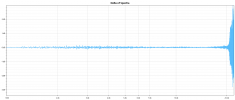

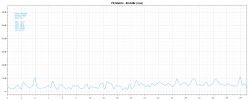
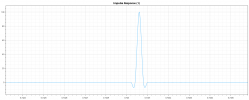
Standard vs Old:
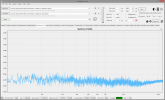
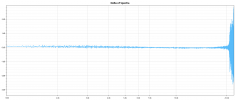
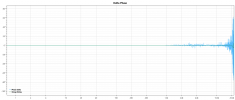

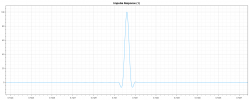
(impulse response is that of the transfer function between the two samples).
Some food for thought: When an electrical component with at least a inherent 3% deviation in its primary parameter right at the signal chain can already be made audibly transparent, what's to say about the rest of the woo-woo?
You are approaching a good point about a lot of tests I've seen, in that the caps were not carefully matched for value. Under those conditions you might hear the deviation in the crossover point, for example.Some food for thought: When an electrical component with at least a inherent 3% deviation in its primary parameter right at the signal chain can already be made audibly transparent, what's to say about the rest of the woo-woo?
DACs_Lover
Member
- Joined
- Jul 4, 2021
- Messages
- 95
- Likes
- 246
Wilson Audio VDO said they use specially made capacitors. I am not sure if it's snake oil or not.
Unless they tell us specifically what these magic caps do that other caps do not, I have to call it marketing.Wilson Audio VDO said they use specially made capacitors. I am not sure if it's snake oil or not.
I'd like to think they simply went to Panasonic, for example and had Wilson printed on the capsWilson Audio VDO said they use specially made capacitors. I am not sure if it's snake oil or not.
TuteTibiImperes
Member
- Joined
- May 7, 2022
- Messages
- 51
- Likes
- 138
Can you expand on that or give a source that explains it in layman’s terms?First of all, many thanks to @ctrl for the excellent post
Why is that surprising? Many microphones are built on the same principles.
So you could hook up the cap to a microphone amp and see what you'll get if you plat sound sound through a closeby speaker, and then quantify the amount of microphonics. Now do the same with an 8-ohm resistor in parallel and see how much of it is left... I'd be surprised if you'd be able to pick it up.
I always thought capacitors were like batteries - they take energy in, store it, and then release it, they just can’t release slowly over time like batteries can.
I thought microphones work like speakers in reverse - instead of converting electrical energy into the motion of a diaphragm to make sound, they convert motion of a diaphragm excited by external sound waves and convert it into electrical energy.
Not sure what you're asking, but a microphonic component typically works as both a microphone or a speaker.Can you expand on that or give a source that explains it in layman’s terms?
I always thought capacitors were like batteries - they take energy in, store it, and then release it, they just can’t release slowly over time like batteries can.
I thought microphones work like speakers in reverse - instead of converting electrical energy into the motion of a diaphragm to make sound, they convert motion of a diaphragm excited by external sound waves and convert it into electrical energy.
Similar threads
- Replies
- 20
- Views
- 2K
- Replies
- 137
- Views
- 10K
- Replies
- 11
- Views
- 1K
- Replies
- 106
- Views
- 29K
- Replies
- 30
- Views
- 2K

